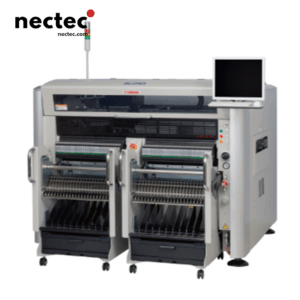In today’s fast-paced manufacturing environment, the demand for efficiency and precision is higher than ever. As industries evolve, so too do the technologies that facilitate production. One of the most significant advancements in automating assembly processes is the development of pick and place machines. These automated devices can revolutionize the way products are assembled, offering numerous benefits over traditional manual methods. In this blog, we will explore the various advantages of using pick and place machines, focusing on their impact on productivity, accuracy, and overall manufacturing efficiency.
Improved Productivity
One of the most compelling advantages of pick and place machines is their ability to significantly boost productivity. Unlike human operators who can tire or require breaks, these machines can operate continuously without loss of performance. This results in a higher output rate, as multiple units can be picked and placed in a fraction of the time it would take a human.
Furthermore, pick and place machines can be programmed to perform complex assembly tasks that would otherwise require multiple workers. By automating these tasks, companies can reduce labor costs and reallocate human resources to more critical areas of production. The result is not only a more efficient assembly line but also a better allocation of workforce skills and talents.
Enhanced Accuracy and Precision
Another vital advantage of pick and place machines is their unparalleled accuracy and precision. These devices utilize advanced vision systems and sensors, allowing them to accurately locate, pick, and place components with minimal variance. This level of precision is particularly important in industries such as electronics manufacturing, where even a slight misalignment can lead to defects and costly failures.
Moreover, the consistency provided by pick and place machines reduces the risk of human error. While human operators can inadvertently introduce variable factors such as fatigue or distraction, automated machines perform with a high degree of reliability. This can lead to fewer defects, lower waste, and ultimately, higher quality products. In a world where consumer standards are perpetually rising, this level of consistency is more critical than ever.
多功能性和灵活性
Today’s pick and place machines are not limited to a single task or type of product. They can handle a wide variety of components, from delicate circuit boards to heavy mechanical parts. This versatility allows manufacturers to adapt quickly to changing market demands and product designs without the need for extensive retooling efforts.
Furthermore, the programming capabilities of modern pick and place machines allow them to switch between different assembly tasks seamlessly. This agility is a vital asset for manufacturers looking to stay competitive in an ever-changing landscape, as they can efficiently respond to new product lines or shifts in consumer preferences.
成本效益
While the initial investment in pick and place machines may seem significant, the long-term cost savings are substantial. By improving operational efficiency, reducing the need for manual labor, and minimizing product defects, companies can enjoy decreased operational costs over time. The number of materials wasted due to errors can dramatically fall, translating to cost savings that greatly benefit the bottom line.
Additionally, as the production process becomes more streamlined, energy consumption often decreases. Many modern pick and place machines are designed with energy efficiency in mind, further contributing to reduced operational costs. In times when sustainability and responsible manufacturing practices are gaining prominence, these machines align well with eco-friendly objectives, enhancing a company’s reputation while reducing expenses.
Increased Safety in the Workplace
Safety is a paramount concern in any manufacturing environment. Pick and place machines contribute to a safer workplace by taking on hazardous tasks that would otherwise involve human workers. For instance, they can be used to handle heavy items, sharp components, or substances that could pose a risk to health and safety.
Moreover, by reducing the number of human operators required on the assembly line, the overall risk of workplace accidents decreases. This not only benefits the workers employed but also the organization, as lower injury rates can lead to lower insurance costs and higher overall morale among staff.
Data and Process Integration
Another exciting advantage of pick and place machines is their ability to integrate with data management systems. These machines can gather and report data on production performance, including cycle times, defect rates, and other key performance indicators. This data can be invaluable for managers looking to identify bottlenecks in production or areas for improvement.
Using this information, manufacturers can continuously refine their processes, resulting in an ongoing cycle of improvement. Leveraging data analytics can help organizations achieve even greater efficiency levels and optimize their operations in real-time.
结论
In summary, the advantages of pick and place machines in modern manufacturing cannot be overstated. From improved productivity and accuracy to increased safety and versatility, these automated devices represent a significant evolution in manufacturing technology. As industries continue to advance, embracing such innovations will be crucial for companies aiming to maintain a competitive edge. The relentless pursuit of efficiency, quality, and adaptability will further solidify the role of pick and place machines in the future of manufacturing.






